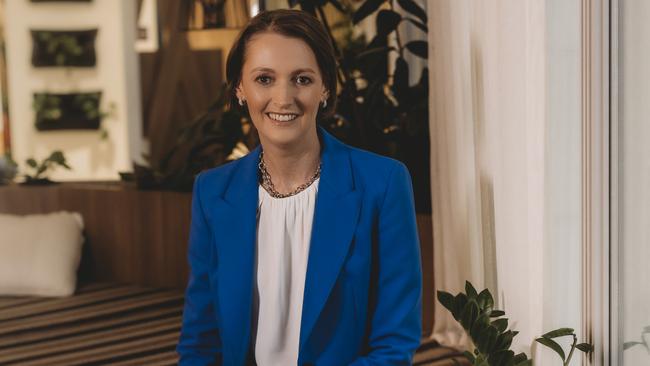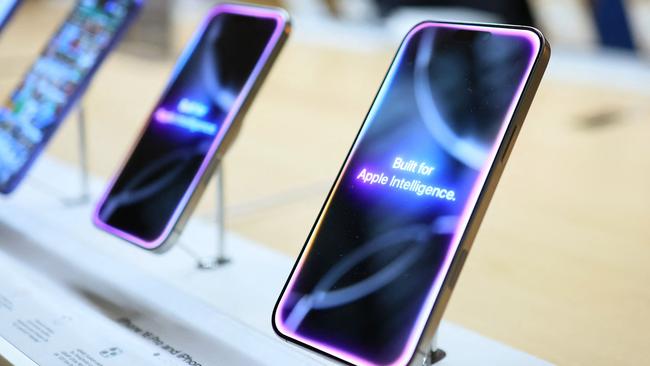Telstra CEO maps out her new growth story which bets on network power
Vicki Brady is betting the house on the telco’s extensive network, declaring it will be the hero behind 6G mobile, AI and autonomous driving.

At the heart of Vicki Brady’s vision for Telstra is the notion of build it and they will come.
Telstra’s boss has declared that the telco’s vast network will be the hero in an age of 6G mobile, AI and autonomous driving – and this will be the thing that carries Telstra deep into the next decade.
In other words, make the network future proof and everything falls into place behind it.
The Telstra chief executive rebooted Telstra’s long-term goals with her much-anticipated Connected Future 30 strategy, designed to be a road map for the telco through the next five years.
It builds on earlier programs established by her predecessor, Andy Penn, like T22 and then T25, which Brady took over. Both of these programs were highly-prescriptive efforts on returns and costs that fundamentally ripped out complexity and cut thousands of jobs. They were painful and long overdue, but fundamentally turned Telstra into a simpler and leaner operator.

Connected Future, however, takes a different approach. It is an aspirational, simplified message and revolves around a technology-led future. Whereas T22 was aimed at snapping Telstra’s mindset of managed decline, Brady’s new strategy wants Telstra to take risks to improve its network.
“It’s more a burning ambition for me than a burning platform,” the Telstra CEO tells The Australian.
“We can never be complacent about continuing to be the number one choice for connectivity in Australia. That doesn’t mean business as usual. It means actually innovating in the core, and that will challenge us in parts of the organisation.”
Her conviction around the pace of change has increased after a recent tour with Telstra’s board to the US that looked up close at network innovation and AI, including Telstra’s newly-minted joint venture with Accenture.
She also attended this month’s Microsoft CEO summit which is increasingly a regular forum for a look into the future of AI.
Telstra will continue to run its $3.2bn-plus annual investment spend at the same pace over the next few years. However, every dollar spent will be framed around building out the core network to set the telco up for the age of AI. There is some additional room for strategic investments.
It has already got the jump on this. Earlier this year it outlined an additional $800m spend on its mobile network over four years, switching on the latest 5G hardware. This year its new digital highway of ultra-high-speed cables, which has been laid between capital cities over the past three years, will be switched on progressively. The Sydney to Canberra leg is switched on from next month.

This underscores Brady’s pitch to consider the “network as a product” is designed to shift the thinking inside Telstra as much as by investors. She wants all of the telco’s staff, from executives down, to start thinking about the network as the thing that defines Telstra from competitors – putting a new pecking order on priorities.
In much the same way Commonwealth Bank has gained an operational and financial edge over rivals by investing in technology, Telstra wants to be known for network supremacy for decades to come.
The new blueprint is less about adjacent businesses like health, energy or media, which have distracted Telstra in the past. Instead, the focus will be on the core lines of consumer, enterprise (small-to-medium business) and corporate customers.
In many ways, the age of industrial internet and AI has given a new purpose to being a big telco. Whereas apps like WhatsApp, or FaceTime eroded the premium telcos had over mobile calling and messaging, the explosion of data-hungry devices and the need to respond to this with a smart network – including uplink capacity, high speeds, low latency and security – has shifted power back to the telcos.
Nor will her competitors of the future be traditional telcos, but hyperscalers and data centre providers, and those building out their own localised data networks.
“There’s no version of the future that doesn’t rely on technology, and it all needs to be connected,” Brady says.
“Over the next five years, as new technologies including AI continue to be adopted, we expect the pace and scale of change to be extraordinary, driving even more demand for secure and reliable connectivity; It’s on us to move fast.”
Growth vs infrastructure?
The approach is a subtle shift in language that Telstra has acknowledged it is increasingly an infrastructure company. But it is determined to not be considered as a typical infrastructure play of traditionally a low-growth, high cash-generating business. Brady thinks Telstra can be both with a premium network that can generate premium returns.
The challenge, however, for all telcos has been generating reasonable returns from the massive investment needed in rolling out a network. Here, Telstra is betting consumers will put a higher value on speed and low latency when it comes to critical applications like AI, autonomous driving or even gaming.
Where Connected Future falls short is on hard cost targets, which in T22 and T25 was the stuff that gets investors excited. The program also increases the ceiling slightly around Telstra’s own debt servicing comfort zone, although the telco is committed to keeping a single-A credit rating. (That puts its ratings on par with a big miner like BHP or Rio Tinto).
She’s open to the idea of recycling capital similar to the move four years ago whereby Telstra sold down a 49 per cent stake in its mobile towers network for nearly $3bn.
For the first time Telstra has committed to the financial policy of “positive jaws” that Australia’s big banks have long operated under. This involves underlying revenue growing at a faster rate than cost growth.
There’s plenty of faith technology will drive new efficiencies. This includes the expectation of a smaller workforce for Telstra by the end of the decade, with the force of AI being felt.
Already Telstra is deploying AI across its network so it can fix things instantly if they break down.

Importantly, Brady has set the ground rules in the new strategy with the aim of growing Telstra’s dividend sustainability between now and the end of the decade; although she cautioned that the level of franking may be pulled back at times if dividends grow, given the tight franking pool.
So too, she has incrementally increased targets with return on invested capital of at least 10 per cent. The previous two strategies targeted 8 per cent. She has also promised discipline on costs and future network investments. By the end of the decade, she expects Telstra to have generated $20bn in surplus capital which will be sent back to shareholders through either dividends or buybacks.
The focus on the network is the first time since the days of former boss Sol Trujillo put attention on what would define Telstra from its competitors. Back in the mid-2000s the then American-imported CEO set Telstra up to dominate in a generation of digital mobile.
Unfortunately the cost of admission for Trujillo was self-induced chaos and a damaging war with Canberra.
eric.johnston@news.com.au




To join the conversation, please log in. Don't have an account? Register
Join the conversation, you are commenting as Logout